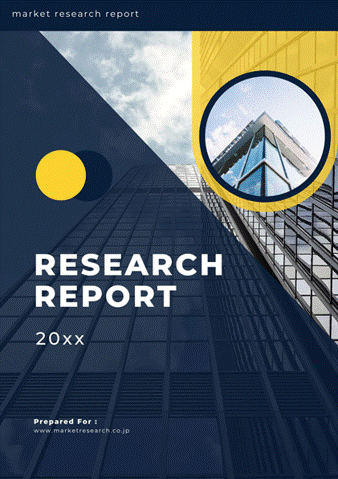 | • レポートコード:MRC2106A133 • 出版社/出版日:Mordor Intelligence / 2021年5月25日 • レポート形態:英文、PDF、150ページ • 納品方法:Eメール(受注後2-3営業日) • 産業分類:輸送 |
| Single User | ¥629,000 (USD4,250) | ▷ お問い合わせ |
| Team User | ¥703,000 (USD4,750) | ▷ お問い合わせ |
| Corporate License | ¥1,110,000 (USD7,500) | ▷ お問い合わせ |
• お支払方法:銀行振込(納品後、ご請求書送付)
レポート概要
| 本調査資料は、世界の海上貨物輸送市場について調査し、イントロダクション、調査手法、エグゼクティブサマリー、市場洞察&動向、種類別(コンテナ貨物、非コンテナ貨物)分析、地域別分析、競争状況、市場の将来などを徹底分析したものです。 ・イントロダクション ・調査手法 ・エグゼクティブサマリー ・市場洞察&動向 ・世界の海上貨物輸送市場規模:種類別(コンテナ貨物、非コンテナ貨物) ・世界の海上貨物輸送市場規模:地域別 ・競争状況 ・市場の将来 |
The global maritime freight transport segment is expected to exhibit a growth of about 4% during the forecast period. The traditional port world is changing as the demographical, technological, and sustainability drivers are affecting the daily business and shaping several important trends. The global shipping industry is expected to face a number of challenges including geopolitical uncertainties, such as the US-China trade negotiations and Brexit.
China has a strong influence on the shipping sector since it is a major trade partner for several countries. Although, the container shipping market in China is facing some early year disruption due to COVID-19. Even though the bunker prices have been increased about 35-45% from January 2020, largely due to changes in fuel regulation on the usage of Low Sulphur Fuel by IMO 2020, the crash in the oil prices due to COVID-19 have nullified this effect.
Tanker rates have profited tremendously from high demand for floating storage, but the charter rates are expected to return closer to long-run averages in the second half of the year as broad economic weakness finds its way into the tanker market.
Key Market Trends
Containerization evolving as a Trend
According to UNCTAD (United Nations Conference on Trade and Development), international maritime trade is driven in particular by growth in containerized, dry bulk and gas cargos. However, uncertainties like the geopolitical tensions and global pandemic like COVID-19 remain an overriding theme in the current maritime transport environment, with risks tilted to the downside. The long-term trend towards the containerization of general cargo is upward rising. A large share of globalized containerized trade continued to be carried across the major East-West containerized trade arteries, namely Asia–Europe, the Trans-Pacific and the Transatlantic. Containerized and dry bulk trades are expected to grow at a compound annual growth rate of 4.5% and 3.9%, respectively, over the forecasting period.
Asia Pacific – the Fastest Growing Market
The Asia Pacific region consists of some of the fastest-growing economies in the world like China and India. This growth in the maritime transportation sector is supported by the trade exchanges by these countries of which, the majority of international trade takes place via sea routes. The central role of Asia in global trade and shipping is also highlighted by trends in global container port-handling activities. Asian countries are experiencing a large increase in intra-regional trade mostly based on manufacturing trades and reflecting fragmented production processes where parts are generally manufactured in multiple locations across Asia and assembled in another location. This is also expected to increase trade, supported by marine transportation. Demand growth originated mostly in Asia, bolstered by ongoing energy policy shifts and rising export capacity in Australia and the United States.
Competitive Landscape
The global maritime transport market is fairly concentrated, with a few players accounting for significant amounts of shares in the market. Some of the prominent companies in the market are MSC, COSCO and AP Moller.
Maritime transport is a complex area of activity, owing to the inherently international nature of shipping and its multi-stakeholder dimension. The companies in the sector, currently are focusing on complying with the International Maritime Organization’s lower global sulphur cap on marine fuels (IMO 2020) from January 2020 as the segment moves towards implementing the plans to reduce its carbon footprint and contribution to pollution.
Reasons to Purchase this report:
– The market estimate (ME) sheet in Excel format
– 3 months of analyst support
1 INTRODUCTION
1.1 Study Assumptions and Market Definition
1.2 Scope of the Study
2 RESEARCH METHODOLOGY
3 EXECUTIVE SUMMARY
4 MARKET DYNAMICS AND INSIGHTS
4.1 Current Market Scenario
4.2 Market Dynamics
4.2.1 Drivers
4.2.2 Restraints
4.2.3 Opportunities
4.3 Value Chain/Supply Chain Analysis
4.4 Technological Advancements
4.5 Government Regulations and Key Initiatives
4.6 Insights of Transshipment Trade
4.7 Insights on Containerized and Non-Containerized Shipments
4.8 Freight rates and Maritime Transport Costs
4.9 Insights on Intermodal/Container Utilization
4.10 Demand-supply Analysis
4.11 Impact of COVID-19 on the Market
5 MARKET SEGMENTATION
5.1 By Type
5.1.1 Containerized
5.1.1.1 General
5.1.1.2 Reefer
5.1.2 Non-Containerized
5.2 By Geography
5.2.1 North America
5.2.1.1 United States
5.2.1.2 Canada
5.2.1.3 Rest of North America
5.2.2 Europe
5.2.2.1 Germany
5.2.2.2 Russia
5.2.2.3 France
5.2.2.4 United Kingdom
5.2.2.5 Rest of Europe
5.2.3 Asia-Pacific
5.2.3.1 China
5.2.3.2 Japan
5.2.3.3 Australia
5.2.3.4 India
5.2.3.5 Rest of Asia-Pacific
5.2.4 Middle East & Africa
5.2.4.1 Saudi Arabia
5.2.4.2 South Africa
5.2.4.3 Rest of Middle East & Africa
5.2.5 South America
5.2.5.1 Brazil
5.2.5.2 Colombia
5.2.5.3 Argentina
5.2.5.4 Rest of South America
6 COMPETITIVE LANDSCAPE
6.1 Market Concentration Overview
6.2 Company Profiles
6.2.1 AP Moller (Maersk)
6.2.2 Mediterranean Shipping Company S.A. (MSC)
6.2.3 CMA-CGM
6.2.4 China Ocean Shipping (Group) Company (COSCO)
6.2.5 Hapag-Lloyd
6.2.6 ONE – Ocean Network Express
6.2.7 Evergreen Line
6.2.8 HMM Co. Ltd
6.2.9 Yang Ming Marine Transport
6.2.10 Zim
6.2.11 Wan Hai Lines
6.2.12 PIL Pacific International Line*
7 FUTURE OF GLOBAL MARINE FREIGHT TRANSPORT MARKET
8 APPENDIX